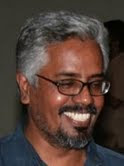Adieu, P. Ramadas “It was a baby that was born prematurely, faintly breathing cinematic life. But in our country there were no incubators at that time to look after and nurture it..” this is how T.M.P. Nedungadi, film critic, described the fate of P. Ramadas’ Newspaper Boy, the first neorealist film in Malayalam. Ramadas was indeed creating history by making Newspaper Boy at the age of 22 when he was a college student. But history is replete with such instances and heroic acts that blaze a trail, but go unacknowledged at that time, and are later accorded ‘classic’ status. What Ramadas did for Malayalam cinema was one such act. He was not merely creating a record of sorts by becoming the youngest filmmaker, but his work too was totally fresh and path breaking in its thematic choice and cinematic vision. Even though it was made and released (on May 13, 1955) a few months before Pather Panchali (released on August 26 the same year), Newspaper Boy could not create the same impact, nor could Ramadas, like Satyajit Ray continue in his film career. Newspaper Boy was shown in various cities in India, and did receive critical acclaim: ‘Amateur film group proves brains are better than big-budgets, said Bombay Chronicle, while Blitz saluted the ‘students who produced a film and made history’. But the film did not do well at the box office, and Ramadas had to go back to his studies and pursue legal profession. Though he did come back to cinema two decades later to make Niramala (1976) followed by Vatakaveetile Aththi (1981), they were not in or ahead of their times or matched the brilliance of his debut film. All through life, his passion for cinema continued. He was also the founder of one of the first film schools in the State – Kalabharathi Film Institute, which he launched in 1974. Newspaper Boy was based on one of his own stories titled ‘ Compositor’. As a student, after learning about Raj Kapoor being the youngest filmmaker in the country, Ramadas wanted to break that record. He was active in theatre and other cultural activities; for instance, his film was produced by one such youth collective Adarsh Kalamandir, which was part of Mahatma Library in Thrissur. After his initial foray into cinema, he returned to study law and went on to become a lawyer, a profession he pursued till the end, along with teaching cinema and practising alternative medicine. Newspaper Boy stands apart from the rest of the films of the period, for its bleak yet deeply humanistic view of life. Its narrative follows Appu and his family; It is a story of the grit and determination of an adolescent in the face of tragedies. Most importantly, the film kept away from the popular and omnipresent love story formula of the period; and instead dealt with everyday life and its tragedies, firmly set in post-independence India. Unlike many films that dealt with similar themes, the film was not tempted by slogans or empty rhetoric either in its dialogues or visuals. It also dared to take cinema out of sets and studios, and some of the most memorable scenes in the film were shot on the streets of Thrissur and Chennai, all of which, coupled with its innovative use of sound, added to its realistic aesthetic. But the mood of the times was not in its favour nor did it receive encouragement it deserved and needed. Still, the creative spirit of Newspaper Boy and Ramadas will continue to inspire generations of young filmmakers who dare to dream and realise them against all odds.




1 Comments:
thanks for good information it will b helpful for studentsmsbte result
Post a Comment
Subscribe to Post Comments [Atom]
<< Home